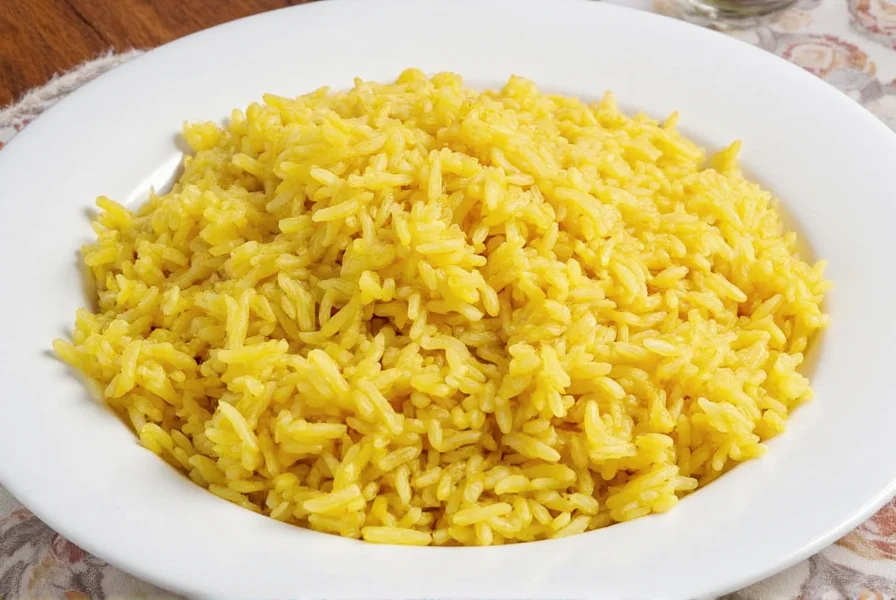Saffron basmati rice is a luxurious fusion of premium basmati rice and saffron, creating a dish celebrated for its golden hue, delicate floral aroma, and rich flavor profile. This combination elevates simple rice into an elegant culinary experience, widely used in Middle Eastern, Indian, and Persian cuisines for special occasions and everyday meals alike.
Basmati rice, originating from the foothills of the Himalayas in India and Pakistan, is renowned for its long, slender grains and distinctive nutty fragrance. Saffron, derived from the stigmas of the Crocus sativus flower, is the world's most expensive spice due to its labor-intensive harvesting process—each flower yields only three tiny threads. When combined, these ingredients create a harmonious balance of texture, color, and flavor that defines saffron basmati rice.
Why Saffron Basmati Rice Is Unique
- Visual Appeal: Saffron imparts a vibrant golden-yellow color, making dishes visually striking for presentations and celebrations.
- Complex Flavor: The subtle floral notes of saffron complement basmati's natural nuttiness without overpowering it, creating a layered taste experience.
- Cultural Significance: Used in traditional dishes like Persian Chelow, Indian Biryani, and Spanish Paella, it holds deep culinary heritage across multiple cultures.
- Nutritional Value: Basmati rice has a lower glycemic index than regular rice, while saffron provides antioxidants like crocin and safranal, known for anti-inflammatory benefits.
How to Prepare Authentic Saffron Basmati Rice
Follow these precise steps for restaurant-quality results at home:
- Soak Basmati Rice: Rinse 1 cup of basmati rice under cold water until clear. Soak in water for 30 minutes to prevent clumping and ensure even cooking.
- Infuse Saffron: Crush 15-20 saffron threads in a mortar, then steep in 2 tablespoons of warm milk or water for 15 minutes to release maximum color and aroma.
- Cook Rice Properly: Use a 1:1.5 rice-to-water ratio. Bring to a boil, then simmer covered for 15-18 minutes until tender. Avoid stirring to maintain grain integrity.
- Combine and Rest: Gently fold saffron infusion into cooked rice. Cover and let rest for 5 minutes before fluffing with a fork.
Key Buying Tips for Premium Ingredients
Basmati Rice Selection
- Grain Length: True basmati grains should be 7-9mm long and remain separate when cooked.
- Aroma Test: High-quality basmati has a distinct nutty scent when raw; avoid rice with no smell or chemical odors.
- Origin: Look for "Basmati 1121" or "Pusa Basmati" varieties from India or Pakistan for authentic quality.
Saffron Quality Indicators
- Color Test: Genuine saffron threads should be deep red with orange tips; avoid uniformly dark or brownish threads.
- Water Test: Drop threads in warm water—real saffron releases color slowly over 10-15 minutes; fake saffron dissolves instantly.
- Source: Choose Iranian or Kashmiri saffron for superior flavor; avoid "saffron powder" which is often adulterated.
| Ingredient Quality Check | What to Look For | Red Flags |
|---|---|---|
| Basmati Rice | Long, slender grains (7-9mm), natural nutty aroma | Uniformly white appearance, no fragrance |
| Saffron Threads | Deep red with orange tips, slow color release in water | Powdered form, uniform color, dissolves instantly |
Frequently Asked Questions
What makes saffron basmati rice different from regular basmati rice?
The key difference is saffron infusion. Regular basmati rice has its own natural fragrance but lacks the golden color and floral complexity added by saffron. Saffron also contributes antioxidants and subtle earthy notes that elevate the dish's flavor profile beyond standard basmati.
How much saffron should I use for rice?
For 1 cup of basmati rice, use 15-20 saffron threads (0.05-0.1g). This amount provides optimal color and flavor without overpowering the dish. Saffron is potent—more isn't better, and excessive amounts can create a medicinal taste.
Can I substitute saffron with turmeric for color?
Turmeric provides yellow color but lacks saffron's floral aroma and complexity. Use 1/4 tsp turmeric for color only if saffron is unavailable, but expect a completely different flavor profile. For authentic taste, invest in small amounts of real saffron—it's cost-effective since a little goes far.
Saffron basmati rice transforms ordinary meals into extraordinary experiences through its perfect harmony of texture, color, and flavor. Whether serving at celebrations or elevating weeknight dinners, mastering this dish requires attention to ingredient quality and precise cooking techniques—ensuring every grain tells a story of culinary tradition.











 浙公网安备
33010002000092号
浙公网安备
33010002000092号 浙B2-20120091-4
浙B2-20120091-4